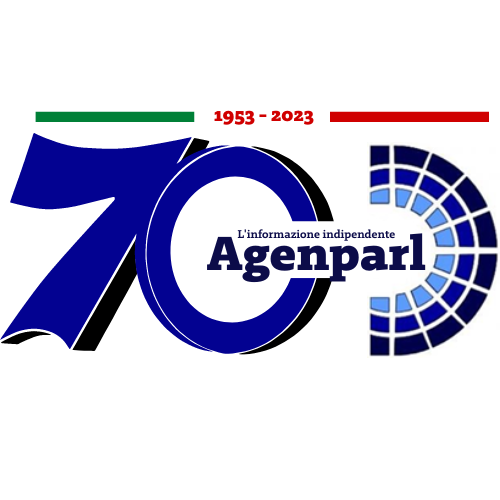 (AGENPARL) - Roma, 16 Agosto 2024
(AGENPARL) - Roma, 16 Agosto 2024(AGENPARL) – ven 16 agosto 2024 A weekly compendium of media reports on science and technology achievements
at Lawrence Livermore National Laboratory. Though the Laboratory reviews
items for overall accuracy, the reporting organizations are responsible for
the content in the links below.
….. LLNL Report, Aug. 16, 2024
A national laboratory/university consortium will work on different
technologies to detect nuclear materials. (Image: Adobe Stock)
… Let there be light
https://interestingengineering.com/energy/us-scientists-use-light-to-detect-nuclear-materials
A team of researchers including Lawrence Livermore scientists is designing a
probe to detect special nuclear material remotely.
The research is aimed at developing a quantum sensing probe, which also can
characterize the special nuclear materials without contact.
The research is being conducted as part of the Consortium for Enabling
Technologies and Innovation, a consortia announced recently by the DOE’s
National Nuclear Security Administration and includes universities and
national laboratories.
One of the projects uses light to develop an advanced quantum sensing probe
to serve as a novel spectroscopy- and optics-based method for nuclear trial
verification.
The US DOE/NNSA Office of Defense Nuclear Nonproliferation had announced a
grant of $50 million for two consortiums to link basic university research
with applied laboratory research to advance technical capabilities in support
of nuclear security and nonproliferation missions. It is aimed at enabling an
effective pipeline of talented next-generation experts to establish careers
at DOE national laboratories.
Read More
https://interestingengineering.com/energy/us-scientists-use-light-to-detect-nuclear-materials
Joe Ralph, co-lead author and inertial confinement fusion research physicist
at LLNL, discusses the critical role of implosion symmetry in achieving a
burning plasma state at the National Ignition Facility. (Photo: Blaise
Douros/LLNL)
… Getting it straight
https://phys.org/news/2024-08-importance-symmetry-pre-ignition-fusion.html
Researchers at Lawrence Livermore National Laboratory (LLNL) have
retrospectively confirmed that implosion asymmetry was a major aspect of
fusion experiments before achieving ignition for the first time at the
Lab’s National Ignition Facility (NIF), the world’s most energetic laser.
In 2021, indirect drive inertial confinement fusion (ICF) experiments
achieved a burning plasma state with neutron yields exceeding 170 kJ, roughly
three times the record in 2019 and a necessary stage for igniting plasmas.
The results were achieved despite multiple sources of degradations —
including asymmetries — that led to high variability in performance. This
milestone was a critical step toward achieving ignition on Dec. 5, 2022,
Ralph said.
The significance of symmetry in ICF experiments, according to LLNL physicist
Joe Ralph, is like trying to fly an airplane with a heavy left wing. The
relative wing weight doesn’t matter much while you are still on the ground,
but it makes a big difference when you try to lift off. Achieving a burning
plasma is like lifting off.
Read More
https://phys.org/news/2024-08-importance-symmetry-pre-ignition-fusion.html
The image looks down the barrel of a metallic carbon nanotubes embedded in an
array of closely-packed carbon nanotubes with different electronic
properties. (Image: Ella Maru Studio)
… Those metaling nanotubes
https://www.nanowerk.com/nanotechnology-news3/newsid=65622.php
A Lawrence Livermore National Laboratory (LLNL) team has found that pure
metallic carbon nanotubes are best at transporting molecules.
Molecule separations play an ever-increasing role in modern technology, from
water desalination to harvesting critical materials to high-value chemicals
and pharmaceuticals manufacturing.
To enhance water and proton transport, LLNL scientists found that inner pores
smaller than one nanometer in metallic carbon nanotubes are better at
transporting materials than conventional semiconducting carbon nanotubes.
Read More https://www.nanowerk.com/nanotechnology-news3/newsid=65622.php
A machine-learning potential derived from first-principles calculations
unveils the intricate mechanisms of CO2 capture in liquid ammonia.
(Illustration: Liam Krauss/LLNL)
… Counting atom by atom
https://www.techiexpert.com/llnl-scientists-use-machine-learning-to-probe-carbon-capture-at-atomic-level/
Climate change is posing a critical threat to the planet. Innovative
approaches are required to reduce the CO2 emissions that lead to climate
change. Lawrence Livermore National Laboratory (LLNL) researchers have come
up with a significant innovation in the field. They have developed a machine
learning model to unravel the complexities of CO2 capture at an atomic level.
The LLNL team has developed a specific machine-learning model that provides a
detailed understanding of how amine-based sorbents capture CO2. The research
has the potential to enhance the efficiency of direct air capture (DAC)
technologies. It may help in reducing the excess CO2 that fuels global
warming.
The Department of Energy forecasts that non-renewable sources will continue
to dominate national energy production until 2050 despite the current global
efforts to transition to renewable energy. It means that there is an urgent
need for developing renewable energy sources. It is simultaneously also
important to improve technologies that capture and store CO2.
Amine-based sorbents have shown great promise. The substances are
cost-effective and efficient at binding CO2 even in very low concentrations.
It is being considered as a viable solution for DAC implementation in large
scale.
Read More
https://www.techiexpert.com/llnl-scientists-use-machine-learning-to-probe-carbon-capture-at-atomic-level/
The figure shows a simulation of the distribution of fluid pressure after
injection of CO2 into an offshore oil and gas field in the Gulf of Mexico.
(Illustration: Gulf Coast Carbon Center)
… Look before you go under
https://phys.org/news/2024-07-simulator-fate-carbon-dioxide-underground.html
Before you decide on a specific geographical location for underground carbon
storage, it is good to know exactly what you are setting in motion, both with
injection, i.e. the process of pumping the greenhouse gas into the
underground, and over time — for up to hundreds of years — while the gas
is down there.
This requires the ability to make fairly accurate predictions based on
knowledge about the geological conditions in the subsurface, as well as how
CO2 behaves under different pressure and temperature conditions, and how
the greenhouse gas can react chemically with other substances in the
underground.
The necessary predictions can be made using a simulator, which is a highly
sophisticated computer program. A group of chemistry researchers from the
Technical University of Denmark is now expanding the GEOS carbon storage
simulator to include, among other things, their expert knowledge on
geochemical reactions. GEOS is an open-source tool originally developed by
Lawrence Livermore National Laboratory, Stanford University and
TotalEnergies.
Read More
https://phys.org/news/2024-07-simulator-fate-carbon-dioxide-underground.html
——————————————————————————
Founded in 1952, Lawrence Livermore National Laboratory https://www.llnl.gov
provides solutions to our nation’s most important national security
challenges through innovative science, engineering and technology. Lawrence
Livermore National Laboratory is managed by Lawrence Livermore National
Security, LLC for the U.S. Department of Energy’s National Nuclear Security
Administration.
Read previous Lab Report articles online https://www.llnl.gov/news/lab-report
— Unsubscribe from this newsletter :
